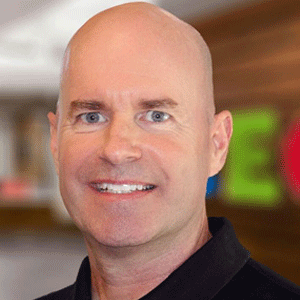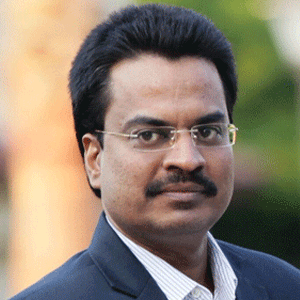THANK YOU FOR SUBSCRIBING

John OKeefe, VP & CIO, Lafayette College
This past June, Lafayette College’s Division of Information Technology (IT) Services had the pleasure of hosting over 150 CIOs and other technology leaders from the top 70 liberal arts colleges in the country for the annual Consortium of Liberal Arts Colleges (CLAC) Conference. The consortium's mission is to explore the use of information technology in the context of liberal education and to serve as a forum for the exchange of ideas among its members. CLAC also develops robust opportunities for communities of practice to enrich one another through collaboration.
While the conference program included many wonderful presentations given by staff from the CLAC membership, it also featured two dynamic keynote speakers who brought provocative perspectives from influential positions in the tech sector. Each speaker commented on the massive disruption that has occurred across multiple sectors of the economy and around the globe, raising questions about how we lead in such disruptive times.
After hearing each of them speak, I was left with a renewed sense of the strategic importance of IT in the ongoing national conversation about the future of higher education. But, how can we ensure that we are serving our institutions appropriately? Are our IT organizations well-positioned to operate in this environment? To answer these questions, I believe there are three main themes to consider: organizational evolution, collaborative infrastructure, and transformational leadership.
So what do I mean by organizational evolution? As I look around at the higher education IT landscape, there are still many organizations that have the same structures as they did in the 1990s: User support, Network/Systems, Instructional Technology, Administrative Computing, etc. These units, or ones similar, have been around for a long time. But rarely do I see organizations with names like Data Management Services, Process Improvement Consulting, Pedagogy and Instructional Design, or Private Cloud Services.
Making the shift from an organizational culture that focuses on providing specific technologies to one that focuses on a services-oriented approach requires more than changing a department’s name. It requires a major culture shift within the organization, coupled with a strategy to train and align staff to meet
This transition requires IT leaders to have the confidence of the team, and the people-skills to navigate difficult conversations. I believe we must evolve from departments built around legacy technologies to become service oriented organizations that are tightly aligned with the institution's mission.
Another consideration is how we collaborate effectively with our peers. Regardless of size, type, or classification, colleges and universities across the country are exploring new ways to enable partnerships. The future of our institutions depends on our ability to build connections well beyond our campus borders. Finding partner schools and navigating campus policy, practice, and politics, provides significant challenges to nascent collaborations. Having difficult to use and/or totally incompatible technology infrastructures makes it even more difficult for faculty and students to seamlessly move between campuses. This can break fragile connections before they have an opportunity to root and grow. To solve this problem, we need to work with our peers to develop a collaborative infrastructure. Collaborative infrastructure in this context has three main components: private cloud architecture, identity and access management, and an application ecosystem.
As a foundation for collaborative infrastructure, a private cloud infrastructure that is common to all participating institutions must be built. This private cloud should have the capacity to interoperate with public cloud providers and technologies, and must be as flexible, reliable, and easy to use as the public cloud is today. Having flexibility between public and private cloud architectures would allow IT leaders across institutions to make best-of-breed decisions about each component of their institution's application portfolio.
In addition to a common private cloud infrastructure, institutions must have a reliable and robust authentication and access management capability. Using Internet2 frameworks and technologies such as the InCommon Federation and the emerging Trusted Identity in Education and Research (TIER) initiative will allow faculty, students, and staff to access resources beyond their campus walls securely and seamlessly using their home credentials.
The last piece of the puzzle is to develop a common set of applications, or application ecosystem. This would allow partner colleges and universities to focus their resources on a prescribed set of capabilities that have been especially chosen and implemented to benefit collaboration. Developing this three-pronged collaborative infrastructure would strengthen relationships between faculty and students across institutions, and create efficiencies that enable more strategic deployment of shared IT resources deployed across multiple campuses.
To create new organizations and develop these deeper collaborations, transformational leadership is required. What are some attributes of transformational leaders? For starters, demanding the best from ourselves and our teams is a must. But beyond that, the best leadership often develops a vision and aleadership style built on simple, clear goals and expectations. This vision must also go beyond what we can see now and imagine something entirely different. One of our speakers at CLAC referenced Kennedy’s stated goal to reach the moon as an example of a such a vision: “I believe that this nation should commit itself to achieving the goal, before this decade is out, of landing a man on the moon and returning him safely to the Earth.”
Here we see quite clearly, the goal: to land a man on the moon; a time boundary: by the end of the decade; and a metric for success: returning him safely to the Earth. I’ve been thinking a lot lately about what my organization’s moonshot vision might be. Framing our next few years of work in this way has helped clarify what we should, and should not, be working on.
There is no doubt that we must continue to think critically about our organizations and how to move more quickly in response to the pressures we face. Organizational evolution, collaborative infrastructure, and transformational leadership are the three key ingredients for CIOs as we contemplate the role we can and must play in shaping the future of higher education.
Weekly Brief
I agree We use cookies on this website to enhance your user experience. By clicking any link on this page you are giving your consent for us to set cookies. More info
Read Also
Artificial Intelligence - Myths And Truths
Sustainable Future through Innovative Technology Solutions
The Future Relies on Augmented AI
Digitalization with the use of digital technologies/Improving business through digital technologies
How Marco's Pizza Leaned On Technology To Succeed Amid The Pandemic By Quickly Pivoting To Contact-Free Delivery And Curbside Carryout
Bunnings Diy Digital Transformation
For a Smarter City: Trust the Data, Ignore the Hype
Smart Community Innovation for the Post Pandemic





















